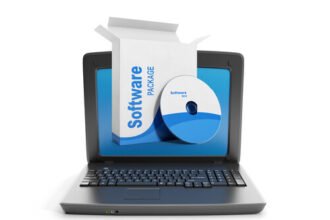The world of artificial intelligence (AI) is constantly changing, and we must be vigilant about the issue of bias in AI. AI translation systems, particularly machine translation (MT), are not immune to this, and we should always confront and overcome this challenge. Let us uncover its implications in AI translation and discover effective strategies to combat them.
Understanding Bias in AI Translation
Bias in AI translation refers to the distortion or favoritism present in the output results of machine translation systems. This bias can emerge due to multiple factors, such as the training data, algorithmic design, and human influence. Recognizing and comprehending the different forms of algorithm bias is crucial to develop effective strategies for bias mitigation.
Types of Algorithmic Bias
Algorithmic bias can manifest in several ways within AI translation systems. To help you better understand what machine learning biases are, we have listed some of the biases that machine translation companies encounter that affect the performance of their translation system.
Data Bias: Sources and Implications
Various sources, including historical texts, biased human translations, or imbalanced data representation, can originate limited training data. Making data bias significantly concerns and directly influences the performance and fairness of AI translation systems.
When you leave data bias unaddressed, it perpetuates discriminatory outcomes and undermines the credibility of AI translation. Always make it your top priority to identify and rectify these biases to ensure unbiased translations.
Pre-existing Bias in Training Data
Within training data, AI translation systems frequently reflect societal prejudice. They inadvertently reinforce prejudice, cultural bias, and gender bias in machine translation. Recognizing and acknowledging these pre-existing prejudices is the first step in minimizing their impact on translation outcomes.
Representation Bias: Challenges of Diverse Language Data
Representation bias occurs when the training data inadequately represents diverse language samples. This issue presents unique challenges because it underrepresents some languages or dialects, leading to less accurate translations for specific language groups.
Overcoming representation bias necessitates comprehensive data collection efforts that cover a wide range of languages and dialects, ensuring equal representation and inclusivity.
Labeling Bias: Impact on Model Performance
The presence of labeling bias in AI translation systems will significantly impact the model’s performance. When annotators train data with biased information, the model learns and replicates these biases, resulting in inaccurate translations and reinforcing discriminatory narratives.
Critically examining the labeling process and ensuring unbiased annotations will enhance the performance and fairness of AI translation models.
Assessing Bias in AI Translation Systems
To effectively tackle bias in AI translation, we listed methods for assessing and measuring bias in the output results. Robust evaluation metrics can offer insights into the presence and extent of prejudice, enabling us to identify areas that need improvement.
1. Measuring Bias in Output Results
Comprehensive and nuanced approaches are necessary to measure bias in AI translation output results. It involves analyzing translations for potential biases based on gender, race, culture, and other sensitive details.
2. Evaluation Metrics for Bias Detection
Developing appropriate evaluation metrics for bias detection is essential in effectively addressing bias in AI translation systems. These metrics should go beyond surface-level analysis and consider the impact of translations on different language groups.
3. Identifying Disproportionate Impact on Specific Language Groups
Bias in AI translation can disproportionately impact specific language groups, perpetuating inequality and marginalization. Identifying such disparities and understanding the underlying causes to develop targeted mitigation strategies is crucial.
Mitigating Bias in AI Translation
Addressing bias in AI translation requires a multifaceted approach. AI translation companies must implement various strategies, such as reducing bias through data preprocessing techniques, collecting unbiased data, and using annotation strategies, applying model regularization and fairness constraints.
Prioritizing explainability and interpretability for bias analysis while integrating ethical considerations into the development process is required to mitigate the AI translation bias.
- Data preprocessing techniques significantly reduce bias in AI translation systems. These techniques involve carefully examining and cleaning the training data to remove or mitigate biases present in the text. By applying methods such as data augmentation, language-specific preprocessing, and balancing data representation, you can enhance the fairness and accuracy of AI translation.
- AI translation models must collect and annotate data fairly. Impartial data collection tactics involve actively seeking diverse language samples and considering various cultural perspectives while assessing their viewpoints.
- Implementing model regularization techniques and fairness constraints can help mitigate bias in AI translation systems. Model regularization will punish training biases, pushing the model to provide more equal translations. Fairness constraints ensure consistent translations across various language groups, minimizing disproportionate impacts and promoting fairness in AI translation.
- Ensuring explainability and interpretability in AI translation systems is crucial for bias analysis. By providing transparent insights into the translation process and highlighting potential biases, users can understand the limitations and context of the translations. This transparency promotes accountability and trust in AI translation systems.
Ethical Considerations in AI Translation
Ethical considerations are paramount in addressing bias in AI translation. It is crucial to prioritize ethical decision-making throughout the development lifecycle. By incorporating principles such as fairness, inclusivity, and respect for user privacy, machine translation company builds AI translation systems that align with ethical standards and societal values.
Ensuring Accountability and Transparency
To effectively address bias, developers of AI translation systems must ensure accountability and transparency. Enabling external scrutiny requires developers’ accurate documentation of the training data, model architecture, and evaluation methodologies. Transparency builds trust and empowers users to have confidence in the fairness and reliability of AI translation systems.
User Consent and Privacy Concerns
Respecting user consent and privacy is crucial in AI translation. Users must have control over their data and be informed about how the translation process uses it. Implementing strong privacy measures and obtaining explicit consent ensures that user data is protected and used responsibly.
Interdisciplinary Approaches for Bias Mitigation
Addressing bias in AI translation requires interdisciplinary collaboration between language experts and AI developers. By fostering open dialogue and knowledge sharing, you will leverage the expertise of both communities to create more accurate and inclusive translation systems.
Bridging the Gap Between Language Experts and AI Developers
Building effective AI translation systems require bridging the gap between language experts and AI developers. Language experts can provide valuable insights into the nuances of language, cultural context, and potential biases. Collaborative efforts will yield more accurate translations that address the needs and preferences of diverse language users.
Continuous Learning and Improvement in Translation Systems
AI translation systems should continuously learn and improve to mitigate bias effectively. Continuous monitoring, assessment, and feedback are required to detect and address issues as they occur.
Conclusion
AI translation is a complex challenge that requires proactive measures. Bias can manifest in data, training data, representation, and labeling, impacting fairness. Strategies like data preprocessing, unbiased data collection, model regularization, and fairness constraints help mitigate bias. Explainability and interpretability promote transparency. Ethical considerations guide development. Collaboration between experts and developers is crucial. Continuous learning ensures ongoing improvement of AI translation systems.







